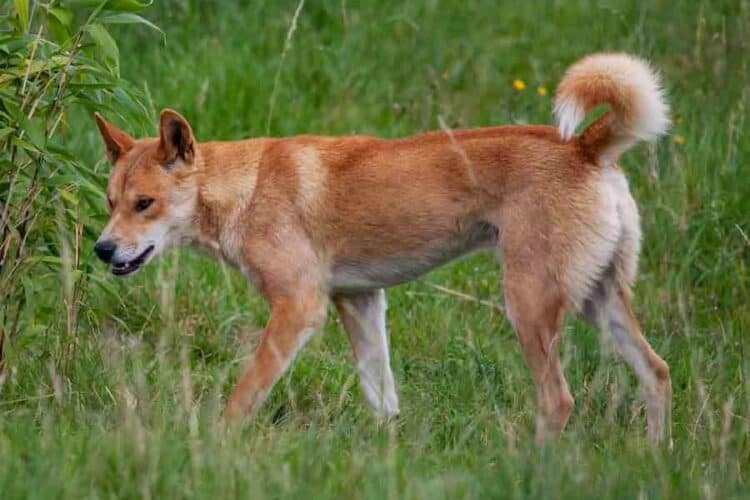Fraser Island is a world-renowned island off the eastern coast of Australia. This giant sand island is full of beautiful lakes, an ancient rainforest, and so much more.
However, much like the rest of Australia, it also has its dangers. One of the biggest dangers of the island is its dingo population.
Wild dingoes can be unsafe due to their territorial and prey instincts. While it is fascinating to think about the dingoes on Fraser Island, many people have questioned just how they got on the island in the first place.
It is said that dingoes were introduced to mainland Australia by Asian seafarers many, many years ago. When the dingoes were introduced to the mainland, they began hunting various mammals and are credited as being a factor behind the extinction of some animal species, specifically the Tasmanian tiger.
After dingoes were introduced to the mainland, It’s thought that humans further brought the dogs onto Fraser Island as well. The idea is that the dingoes may have swum to Fraser Island. The Great Sandy Strait was shorter in distance between the mainland and the island making access for dingoes easy.
It is strange to think of wild dingoes roaming around the world’s largest sand island. But even though they can be dangerous, they are an important part of the ecosystem on the island.
Due to their presence on the island, they are considered the purest bred dingoes around Australia because they aren’t introduced to other dogs.
Domestic, pet dogs are not permitted on the island due to dingoes being protected by law.
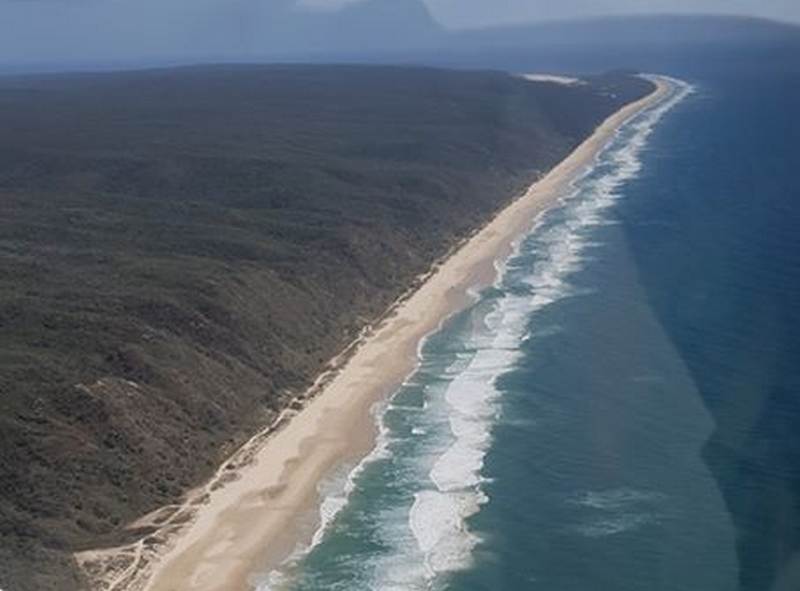
Why Are There Dingoes On Fraser Island?
Even though the dogs might have swum across the waterways between mainland Australia and Fraser Island, history shows that humans are still a large part of why dingoes are on Fraser Island.
The Aborigine people were present on the island at the time and it is possible that the Aborigines were associated with the dingoes being brought to the island.
It is important to note that recordings from this time period (which was long before Captian James Cook sailed by the island in the 1700s) indicated that the dingoes and people lived without fear of each other.
sailed by the island in the 1700s) indicated that the dingoes and people lived without fear of each other.
They coexisted on the island without any major concern. In fact, the Aborigines may have seen the dogs as a resource.
Regardless of whether they swam or were brought by the people of the island to the island, dingoes became a critical part of the ecosystem on the island.
Because of their hunting instinct, dingoes rose to the top of the food chain both on the mainland and the island. However, as previously stated, the dingoes didn’t pose a threat to the Aborigines on the island.
Dingoes roamed the island, staying mostly hiddenly except to hunt for food. The dingo’s rise to the top in the food chain kept them on the island.
Furthermore, the dingoes on the island weren’t interacting with domesticated dogs at the time, which is a huge reason behind why they are so purebred.
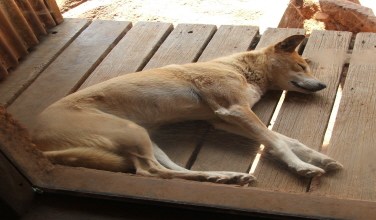
When Were Fraser Island Dingoes Introduced?
As expressed before, dingoes got onto mainland Australia and Fraser Island primarily through being brought by humans.
got onto mainland Australia and Fraser Island primarily through being brought by humans.
It is estimated that they were introduced to the mainland by the Asian seafarers some 5,000 years prior to Captain James Cook claiming the area for Britain.
This is an incredibly long time ago! The exact time frame for when these creatures were introduced to Fraser Island can’t be pinpointed, rather it is assumed that it occurred shortly after they were introduced to the mainland.
Moreover, it is estimated that the dingoes lived among the Aborigines for somewhere around 4,000 to 5,000 years.
While the dingoes on mainland Australia were a part of the reason that the Tasmanian tiger became extinct, they play a very important role on Fraser Island.
became extinct, they play a very important role on Fraser Island.
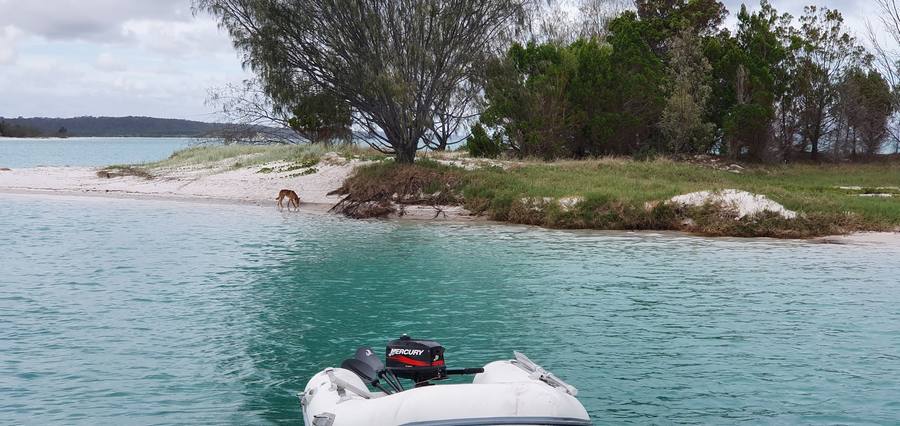
They are considered an apex predator which means that the hunting they do for survival is critical to maintaining the island’s other animal populations that are prey for the dingoes.
which means that the hunting they do for survival is critical to maintaining the island’s other animal populations that are prey for the dingoes.
This role within the ecosystem on the island, as well as the purebred DNA strain of their species , are the top reasons behind dingoes being protected by Australian law
, are the top reasons behind dingoes being protected by Australian law .
.
Because dingoes were introduced to Australia and Fraser Island by Asian seafarers so long ago, it showcases that dingoes aren’t a native of Australia by any means.
They weren’t initially found in Australia, however, dingoes have continued to live on the island and Australia in general due to having all the resources they need to survive.
How Do Dingoes Survive On Fraser Island?
Fraser Island is a unique island with various sand dunes, rainforests, etc. This diverse setting is truly an area where dingoes can thrive.
They typically only come out during dawn or dusk and can be seen along the beaches or wooded areas of the island.
They primarily survive by eating animals like swamp wallabies and wombats. This is because they are carnivorous, which means they love to eat meat.
They live on the island without any threats to their population because they are at the top of their food chain with no predators.
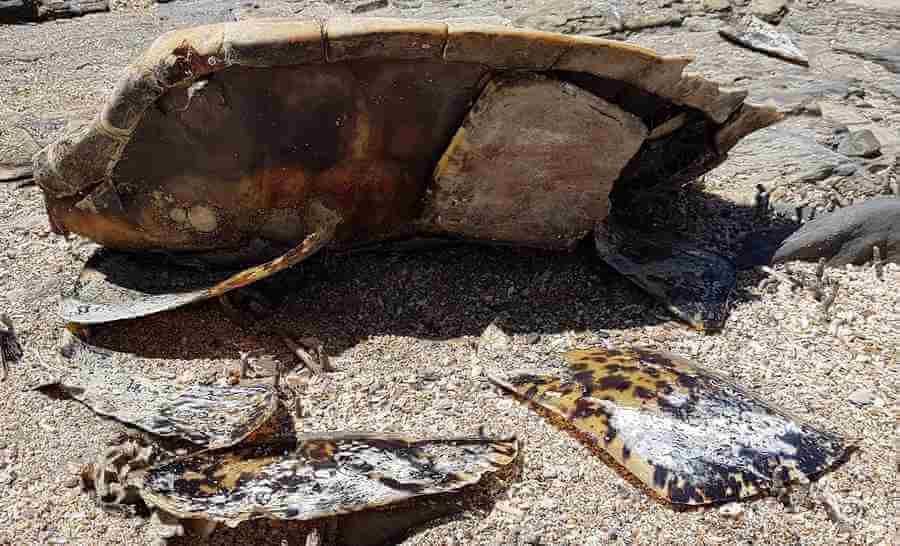
Because Fraser Island dingoes have no predators and are the primary reason behind the maintenance of other mammals on the island, they survive quite well.
However, since their introduction to Australia and the island, they have gained a bad reputation.
They are considered dangerous now when initially they weren’t during their early years on the island. In fact, Fraser Island dingoes weren’t an issue for human visitors until the 1990s.
But why? The answer is more simplistic than one would think.
As Fraser Island become more of a tourist attraction, there was a huge shift in the behaviour of the dingoes on the island. The impact of having more human influence has contributed to the dingoes becoming more aggressive.
The biggest reason behind their potential for aggressive actions is due to humans feeding them .
.
Feeding dingoes is currently highly prohibited on the island. By feeding the dingoes, it breaks down their role in the ecosystem on a much larger scale, which leads to their aggressiveness.
As humans flocked to the island to see the naturalistic beauty, they also came to experience the various wildlife that lives there as well.
It is important to note that hand-feeding dingoes weren’t the only reason behind their behaviour change.
Food scraps left behind in rubbish were an attraction to the dingoes as well. When hand-feeding and food scraps are done repeatedly, it creates an expectation from the dingoes.
They expect to always have access to this and will attempt to still obtain these food sources.
As a result, too many of these actions will encourage them to become threatening.
Additionally, it could result in them changing their eating habits which would put their prey on the island in a compromised position as well.
This is why it is strictly against the law to feed or attempt to feed any dingoes found on Fraser Island.
Dingoes might look like regular dogs since they aren’t very big in size and are often a sandy cream colour with white fur accents. They appear innocent to humans at first.
However, their looks are deceiving. They can be dangerous and can attack. This is unfortunately true for small children as the dogs see them as easy prey.
As a result of a dingo’s potential for aggressive behaviour, the island has taken measures to protect its guests. This includes dingo deterrent fences being installed around the resorts and some camping areas.
If someone encounters a dingo, they should back away slowly and not make any sudden movements. A suggested method for deterring the dog includes standing as tall as possible to appear larger to the dingo.
Backing away slowly helps keep the dingo still within eye’s view. Dingoes are fast runners, and if someone attempts to run away, there is a strong chance that they will be caught by the dingo.
In doing this, the dingo might give up its interest. Dingoes will generally only attack if they are in search of hand-fed foods and unfortunately, children.
Children are small and can be considered easy prey for dingoes. While any wild animal can be unpredictable, humans should still take any possible protective measures possible.
If there are small children within a group, they should always be within an arm’s reach of an adult. Moreover, adults should never travel alone on the island.
It is also important to ensure that everyone is safely within a dingo deterrent fence when dawn or dusk is approaching.
While the dingoes on Fraser Island can be considered dangerous, they aren’t rampantly seen around the island.
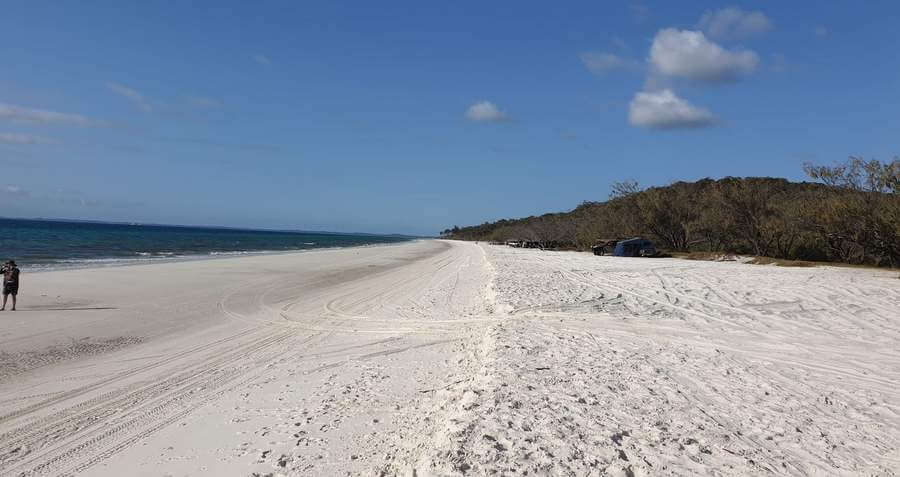
As expressed, they primarily come out at dawn or dusk to hunt for food and otherwise are simply keeping an eye out lurking in their dens or other areas they consider to use as shelter.
Dingoes have been on Fraser Island for thousands of years, and even though they can be dangerous, they are still very important mammals on the island.
Humans have a responsibility to ensure that this species continues to be a protected species.
They can achieve this by not feeding them, cleaning up after themselves, keeping their distance from dingoes, and not bringing pet dogs to the islands.
Pet dogs can breed with dingoes, which puts their population at risk of losing its pureness.
Through proper practice of abiding by the laws set in place to protect Fraser Island’s dingo population, humans can do their part in keeping them as an essential part of the island’s ecosystem.
More Pages On Fraser Island
Avoid The Starlit Trails: Why Not To Drive On Fraser Island At Night
Fraser Island, located off the coast of Queensland, Australia, is a popular tourist destination and a UNESCO World Heritage Site. The island, which spans more than 120 kilometres in length and 24...
Fraser Island, which is a popular tourist destination in Australia. The island has a number of campsites and other facilities where visitors can use toilet facilities. There are on average around 22...


